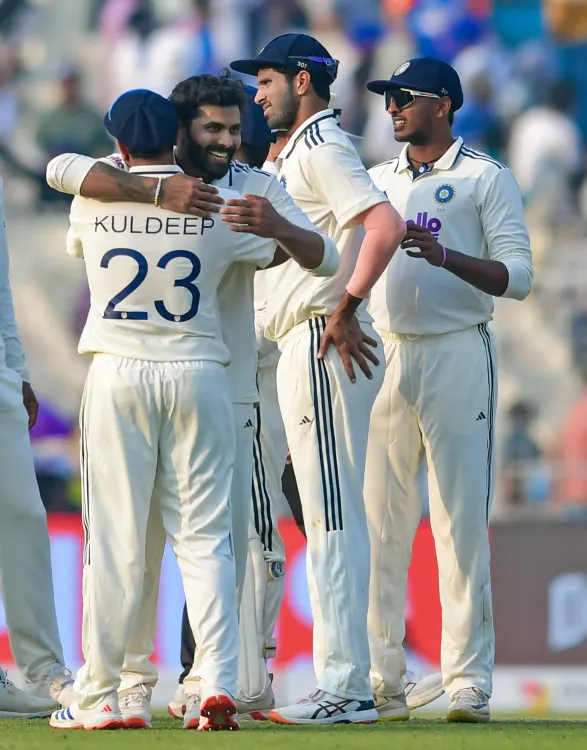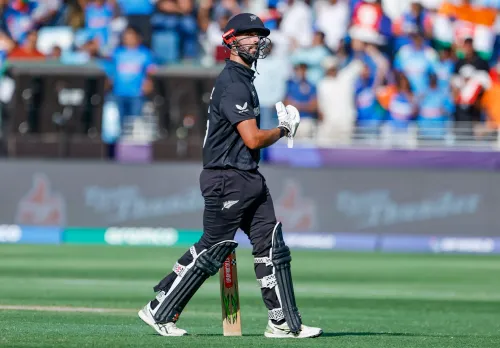Is India Enduring Labour Pains Before New Growth in Test Cricket?

Synopsis
Key Takeaways
- India is navigating a challenging transition in Test cricket.
- Uncertainties in the playing XI are affecting performance.
- Pitch preparation strategies are under scrutiny.
- Acknowledging challenges is vital for team development.
- Future success depends on clarity within the team.
New Delhi, Nov 18 (NationPress) Former Indian cricketer Aakash Chopra provided a comprehensive analysis of India's ongoing struggles during their transition in the red-ball format. He noted that the Shubman Gill-led team is experimenting with various line-ups in an effort to establish a consistent long-term XI. While drawing the five-match Anderson-Tendulkar Trophy in England earlier this year was a positive sign, Chopra emphasized that the team is still undergoing ‘labour pains before new growth can emerge.’
During a discussion on India's transition in Test cricket via JioStar, Chopra remarked, “Transition is often a challenging phase. The series in England temporarily masked this difficult reality because of the unusual pitch conditions. Although the drawn series felt encouraging, we must recognize that we are still experiencing labour pains before any new growth can materialize.”
He elaborated on the uncertainties surrounding the team’s playing XI, stating, “The number three position is still in flux – we’ve seen Sai Sudharsan, Karun Nair, and now Washington Sundar batting there. Dhruv Jurel shows promise but has only participated in five Tests. Role clarity remains a pressing issue. Is Sundar primarily a batter or a bowler, given that he has bowled just one over? We faced similar uncertainties with Nitesh Kumar Reddy recently. Instead of pretending we have everything figured out, we need to accept that this transition is ongoing and will involve some tough phases before we find stability.”
India faced a disappointing 30-run defeat against South Africa in the recently concluded first Test of their two-match series in Kolkata on Sunday. This defeat has raised concerns about the players’ preparation and mindset ahead of their next home game. Following the match, the pitch and its curator were criticized, but head coach Gautam Gambhir clarified that the team received the type of pitch they had requested.
Chopra also commented on India's pitch preparation strategy post-defeat, stating, “Our practice sessions should replicate real match scenarios. Players like Pant and Jurel required time on rank turners, and someone like Gill, coming from bouncy Australian pitches, needed to adapt as well.”
“Pitch preparation isn’t an exact science, but we need to question whether extremely turning pitches are our best strategy for victory. When a match concludes in just two and a half days, it indicates an imbalance. With four spinners compared to their two, why reduce the contest to their level? We’ve witnessed this against New Zealand, Australia, and South Africa before. If this becomes our sole strategy at home, every batsman will require very different and specific preparations just to cope.”
In a challenging batting scenario, Temba Bavuma of South Africa delivered an outstanding performance, scoring a remarkable half-century, which proved pivotal in the game, allowing the visitors to lead the series.
Discussing the pitch conditions through statistical analysis, Chopra noted, “Exceptions often define the norm, and Bavuma's fifty is an exception amidst the 38 wickets that fell in this match. If batting were straightforward, multiple players would have scored heavily, not just one. While we must credit Bavuma for his performance, the reality is that he succeeded where others failed. Learning through victory is rewarding, but learning through defeat poses greater challenges for team development.”
The second and final Test is set to take place on November 22 at Barsapara Cricket Stadium in Guwahati.









